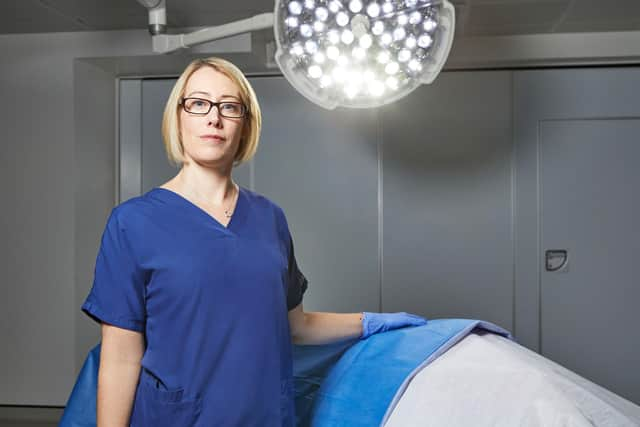Channel 4's My Dead Body: Brighton and Sussex Medical School to feature in pioneering documentary
and live on Freeview channel 276
The one off documentary My Dead Body will be shown on Channel 4 on Monday, December 5.
It looks at the life of Toni Crews, 30, and tells the story of Toni’s illness with cancer before and after her death in August 2020 from adenocarcinoma, a rare and aggressive type of cancer that developed in her tear gland, before spreading throughout her body.
Advertisement
Hide AdAdvertisement
Hide AdToni, a mother of two, was the first person in the UK to elect to donate her body for public display. This film shows the dissection of Toni’s body during a series of educational workshops at Brighton and Sussex Medical School.


Professor Claire Smith, head of anatomy at Brighton and Sussex Medical School (BSMS), led the team of anatomists and clinicians who dissected Toni’s body, over 12 educational workshops earlier this year. In the process, they were able to chart the course of Toni’s cancer from the initial diagnosis to her death four years later.
The workshops have already helped to educate around a thousand medical and allied health profession students, and practicing doctors to improve their understanding of the disease.
The medical school has also retained samples of Toni’s body and organs to educate new generations of students about her rare cancer. The team was able to take a much higher resolution CT scan of Toni’s body than is possible in life. From this, students and researchers are continuing to learn about the nature of cancer and how it moves through the body.
Advertisement
Hide AdAdvertisement
Hide AdToni, who campaigned in life for greater cancer awareness and consented to the televising of her dissection.
Professor Claire Smith said: “If, as a result of this documentary, one extra person goes to a health provider to double check a symptom or one more young person is attracted to a career in medicine or science then I believe that Toni’s wishes will have been carried out. Toni was a remarkable person who has made a difference both in life and now in death.
“We have been so privileged to explore the journey of cancer through the incredible donation she has made. As part of this documentary, we were able to invite around one thousand students, including nurses, paramedics and neuroscientists, who wouldn’t normally get to learn so directly about this very rare form of cancer.”
Toni’s parents, as well as other family members and friends, were involved throughout the making of the documentary.
Advertisement
Hide AdAdvertisement
Hide AdProfessor Smith said: “Through Toni’s gift, millions of people will benefit through research, education and the awareness that she is raising of her experience and her rare cancer.
“We are all incredibly grateful to Toni’s parents and friends who have worked with us to share her story. It was a privilege to be able to spend time with them, to learn about Toni and what an amazing person she was and to share with them what we have already found.”
The dissection was filmed as part of BSMS’s anatomical examination licence. The documentary was carried out under both BSMS’s anatomical examination licence and also its public display licence, owing to Toni’s choice to waive her anonymity.
The documentary also features home video footage and interviews with her family, and draws from a vast collection of her social media posts and letters to her children.
Advertisement
Hide AdAdvertisement
Hide AdThe anatomy team at BSMS delivers teaching to around 3,000 individuals a year, caring for around 60 donors in addition to looking after a collection of museum pots, prosections and skeletal material that comprises thousands of specimens. Medical schools like BSMS still rely on the generosity of individuals to gift their bodies. Despite all the advances in technology, donated human bodies are essential in the teaching of future generations of doctors and allied healthcare students.
These students need to learn the intricacies of the human body and the skills and attitudes that are associated with patient treatment. Additionally, qualified specialists such as surgeons frequently visit the anatomy department to help them prepare for complex surgical cases, using donated human bodies to practise and develop new surgeries and treatments for conditions.